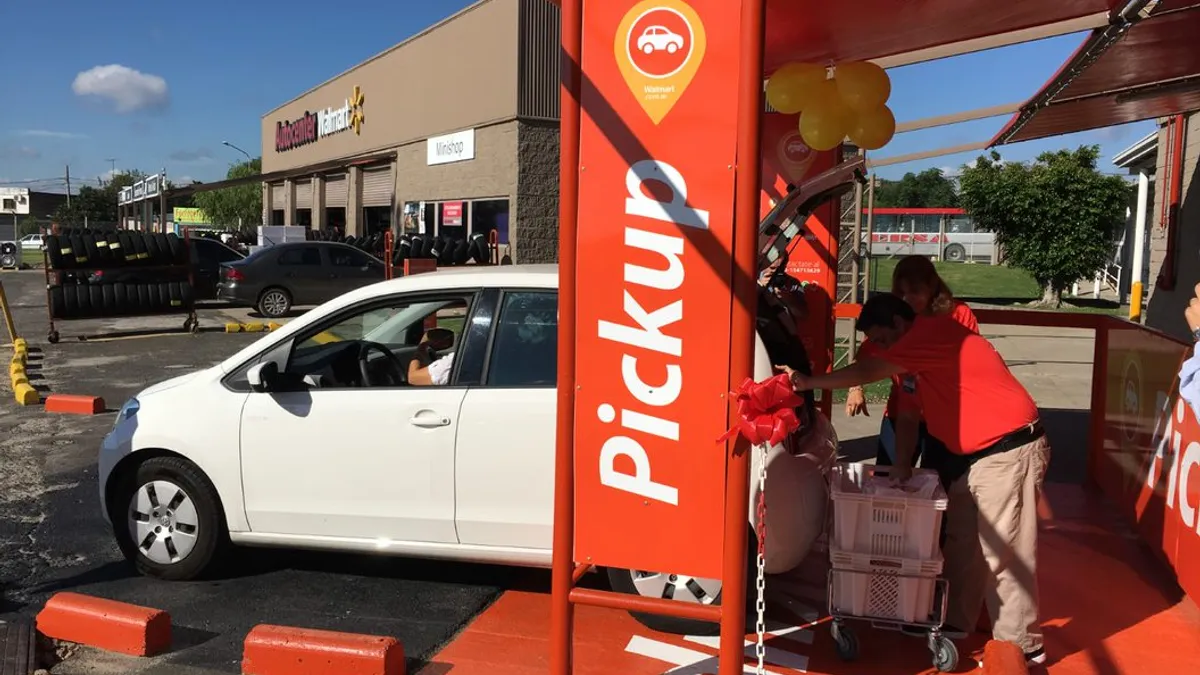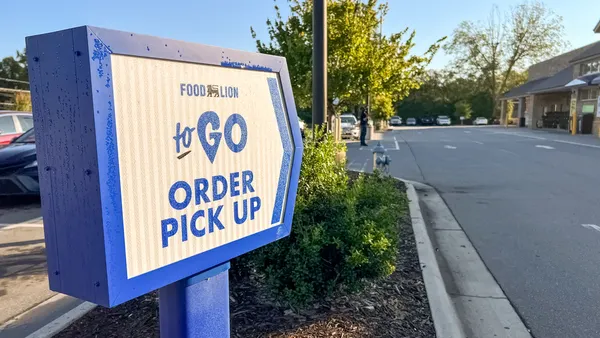Dive Brief:
- Most consumers use grocery pickup infrequently, but fifty percent of millennials are using the service at least once a week, according to a report by Acosta. Millennials also spend the highest percentage of their grocery budget (40%) online, followed by Gen Z (37%) and Gen X (32%).
- Almost half of all online grocery shoppers get their orders fulfilled via pickup and 26% get groceries delivered. The average shopper does 32.7% of their grocery spending online, the report found.
- Fifty-four percent of all pickup shoppers still report going to a brick-and-mortar store weekly to purchase 10 products or more and 45% go to purchase less than 10 products.
Dive Insight:
It's no surprise to see millennials spending the most of any age group on grocery e-commerce. But their affinity for grocery pickup is particularly notable, and should help guide grocers' online marketing strategy and assortment.
Millennial parents, especially, seem to love pickup. According to Acosta, 44% of households with children use the service while just 15% of those without kids use it.
To appeal to a broad range of online shoppers, grocers have introduced financial incentives, optimized their apps and rolled out new services to make pickup even more convenient. Walmart offers free pickup and price-matches store assortment — an expensive proposition, but one that's bringing in droves of new customers. This month, both SpartanNash and Lowe’s Food announced they're using GPS location technology to track customers' journey to the store so that their order is ready when they arrive.
The Acosta findings suggest there are numerous other ways to win over valuable pickup shoppers. Sixty-four percent of millennials say they use retailers' online recipes for inspiration and to build their shopping lists at least sometimes. A growing number of grocers are utilizing shoppable recipes, while others are offering their own recipes on their sites. ShopRite announced in November it's begun offering a tool that lets customers shop from personalized recipes.
Being able to track spending is also important to shoppers, with 37% of those polled by Acosta saying this is extremely important in making an online grocery service appealing.
The report found that despite shoppers' inconsistent use of grocery pickup, 30% plan to utilize the service more in the future. Retailers are preparing for this uptick in usage, with Walmart, Target, Instacart and a host of regional grocers making click-and-collect available nationwide.
Acosta estimates that total online grocery sales will triple to $74 billion by 2023.














